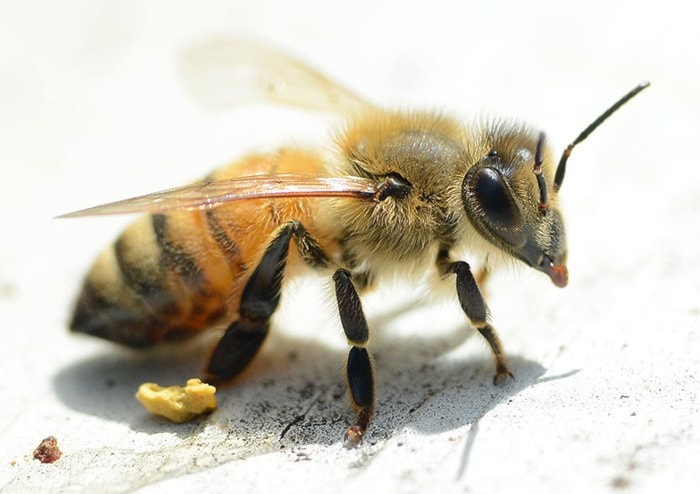“Don’t kill the dandelions.”
That’s priority bee-friendly advice from Leanne Buhler.
Spring dandelions may be just weeds to some, but to Buhler, a proponent of pollinators, they’re critical in sustaining bee populations.
Buhler, operations manager at the Honeybee Centre at Fry’s Corner in Surrey, is spearheading the Community Bee Garden project – an initiative that aims to increase bee populations by providing them with plants that bloom through the warm seasons.
This spring, four 10x10-foot garden plots are being planted throughout Surrey.
“Inside, they’ve got bee-friendly plants and flowers, two honeybee colonies and nesting materials for bumblebees and mason and miner bees – those are native pollinators,” explains Buhler.
If everything goes to plan, 10 gardens will be built by next year, and over the next five years or so, there will be a total of 50 plots throughout the city, making a total of 100 colonies.
Each colony contains anywhere from 10,000 to 85,000 honeybees, depending on the season.
 Its population is composed of one queen bee and thousands of workers and drones.
Its population is composed of one queen bee and thousands of workers and drones.
Just one colony is expected to produce about 20 kilograms of honey per year, and all honey collected will be jarred and donated to the Surrey Food Bank and/or sold, with all proceeds going to the food bank. Six years from now, that will mean two metric tonnes of honey per year.
The project will cost about $250,000 by 2021, says Buhler, who adds it’s a way to give back to the community, and with he signage around each garden plot, to educate the public about bees and the importance of pollination.
For the bee under-informed, the insects do more than just make honey.
Their pollination is responsible for up to one-third of food production – not just most fruits and vegetables, but even beef (cows are fed by bee-pollinated alfalfa).
Each year, B.C. needs about 10,000 colonies for its blueberry crops alone. Of those, about 1,200 come from the Honeybee Centre; about 5,000 come from Alberta.
For years, beekeepers have noticed significant drops in the numbers of bees in the wild and in their colonies – the so-called colony collapse disorder, or CCD.
Population reductions have been blamed on verroa mites, pesticides (notably neonicatinoids, or “neonics”) and reductions in the variety of plants the bees can feed off – the results of factors including global warming, urban development, and in farmlands, mono-culture plantings.
Bees like a variety of plants which bloom throughout the spring, summer and fall.
That’s where the Community Garden Bee Project comes in – giving bees options.
“A well-managed colony can deal with threats,” says Buhler.
The 2016 Community Bee Garden hosts are:
• Historic Stewart Farm, 13723 Crescent Rd.
• PLOT Sustainable Food Garden, 13742 71 Ave.
• Cedargrove Community Garden, 10222 141 St.
• Urban Safari Rescue Society, 1395 176 St.
For more information, visit honeybeecentre.com/beegardens
